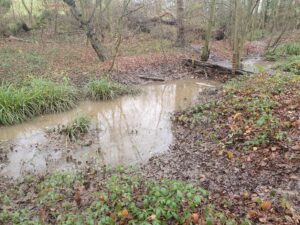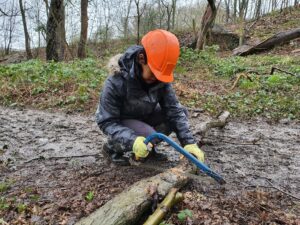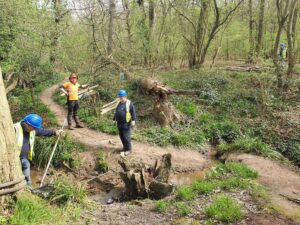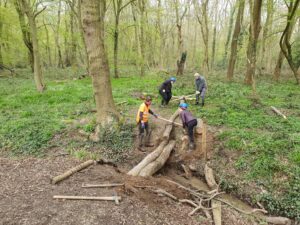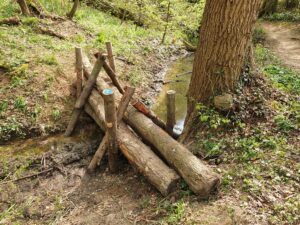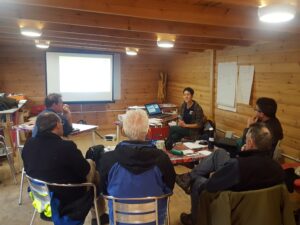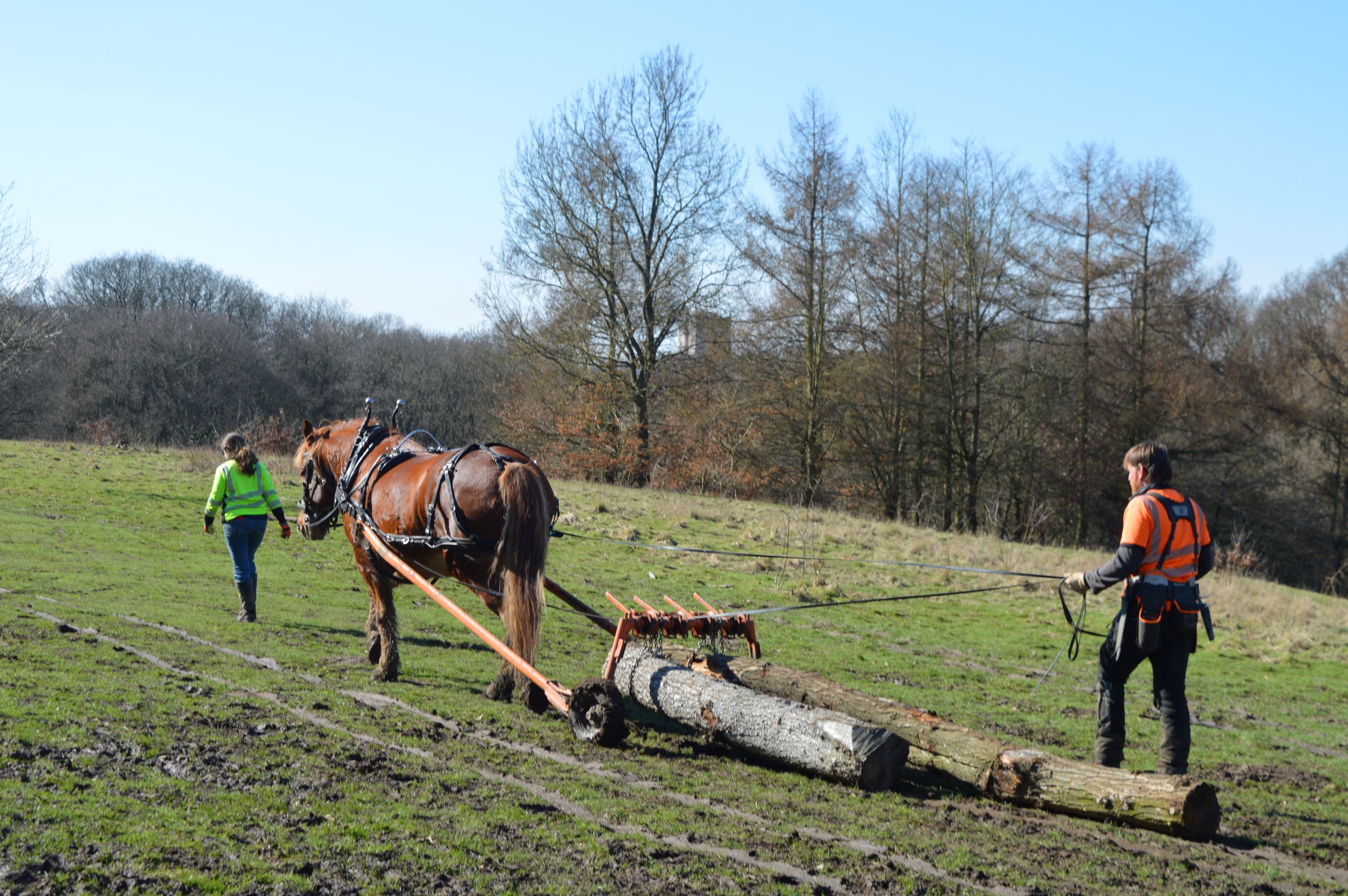
Heavy horse helps deliver natural flood management scheme at Bedfords Park
The Land of the Fanns Landscape Partnership Scheme has worked with Thames21 and the London Borough of Havering to install a new natural flood management scheme at Bedfords Park with the help of a four-legged worker, literally horse power.
Roy, a magnificent Suffolk Punch horse from local contractors Hawthorn Heavy Horses based in Chelmsford, was a vital part of an innovative approach to flood management at Bedfords Park, near Havering atte Bower. Hawthorn Horses worked felling whole trees, identified as part of Havering Council’s woodland management programme. Roy was then used to move these trees into the Rise Park Stream to build ‘leaky’ dams. The advantage of using whole tree trunks to build the dams is that they recreate a natural process and are very effective at safely slowing the flow of water.
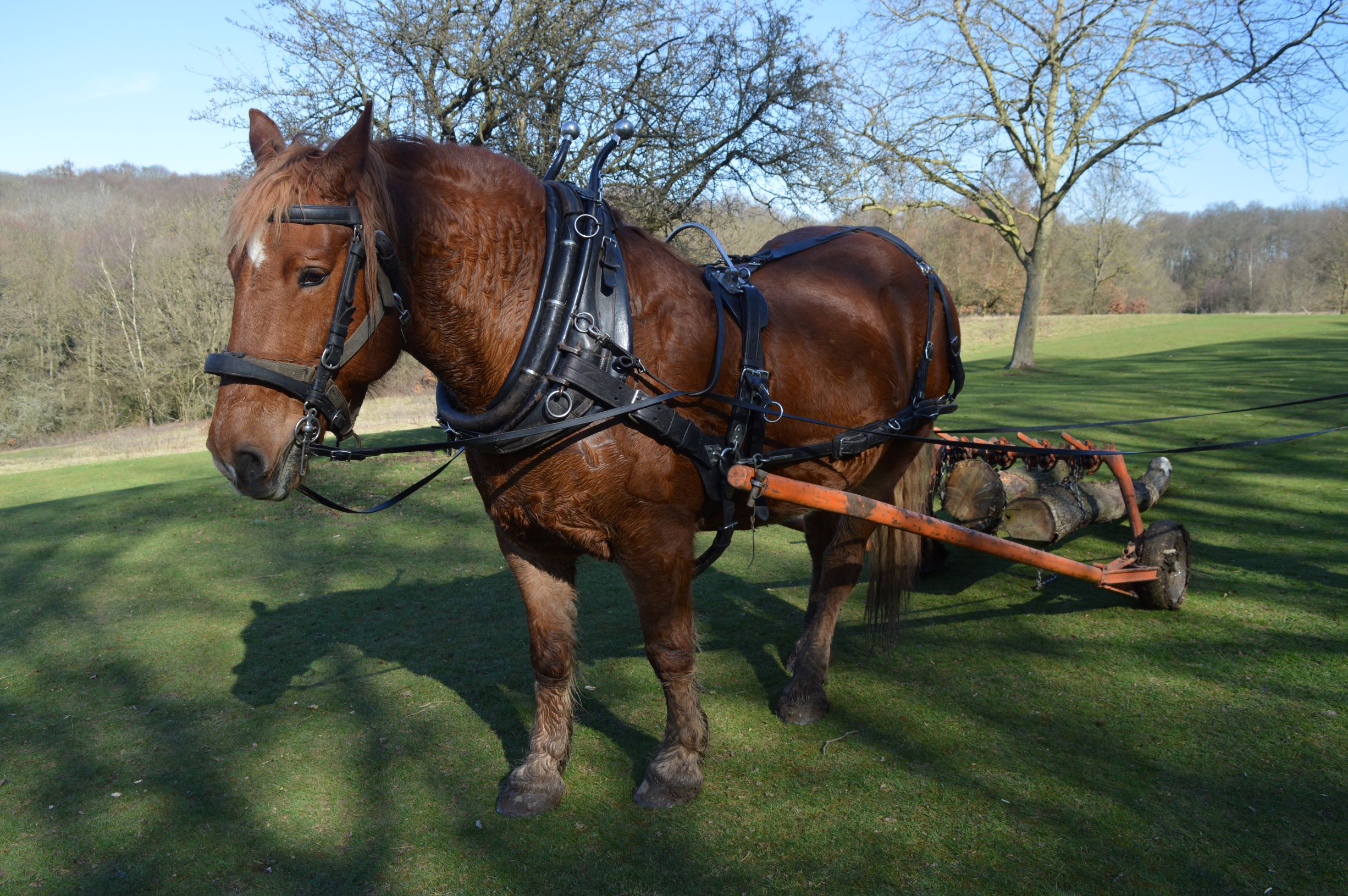
Roy brought 16 tree trunks through the woodland to the stream, then in April volunteers built four tree trunk dams. In addition to the four dams, 11 smaller leaky dams have been built by volunteers since the project started in 2018. Leaky dams are a form of Natural Flood Management (NFM) which uses locally sourced materials to build leaky wooden dams across watercourses. These will help to slow the flow of water in times of heavy rain and reduce surface water flood risk to surrounding properties. Each of the dams have a correlating QR code that if scanned by mobile phone will open the SlowFlow app to show information about the dams and invites users to upload photos of the leaky dams retaining water in high flow events.
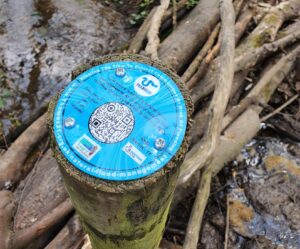
Heavy horses are used to move the timber into place instead of heavy machinery to better protect the existing environment and prevent the trees and ground being disturbed.
Natural Flood Management uses and enhances the natural landscape’s ability to store water and prevent flooding. The aim is to work with nature to restore the natural functioning of river catchments, but where that is not possible, to mimic natural processes. Depending on the character of the local area, that could involve creating storage ponds, planting trees, reducing soil compaction, restoring meandering rivers, creating wetlands, or building leaky dams with local woody materials.
Thames21 is trialing natural flood management in several areas. The aim is to slow down and store floodwaters at the same time as boosting the environment for local wildlife. Natural flood management, whilst reducing flood risk, can also offer many benefits for both people and wildlife, helping to improve river water quality by using nature to filter out pollutants, and help us cope with the impacts of climate change such as increased heavy rainfall and drought by helping the landscape hold water that would otherwise lead to flooding. This project, which begun in 2018, has been funded by DEFRA.
The five-year Land of the Fanns Landscape Partnership Scheme’s aim is to inspire people to discover and explore their local landscape, strengthening attachment to the land and enhancing enjoyment of it, by revealing the heritage and natural beauty all around. Spreading over east London and south west Essex, the Land of the Fanns is a fascinating and diverse landscape full of environmental and historic hidden gems. It is also full of people with histories and stories about the land and its heritage.
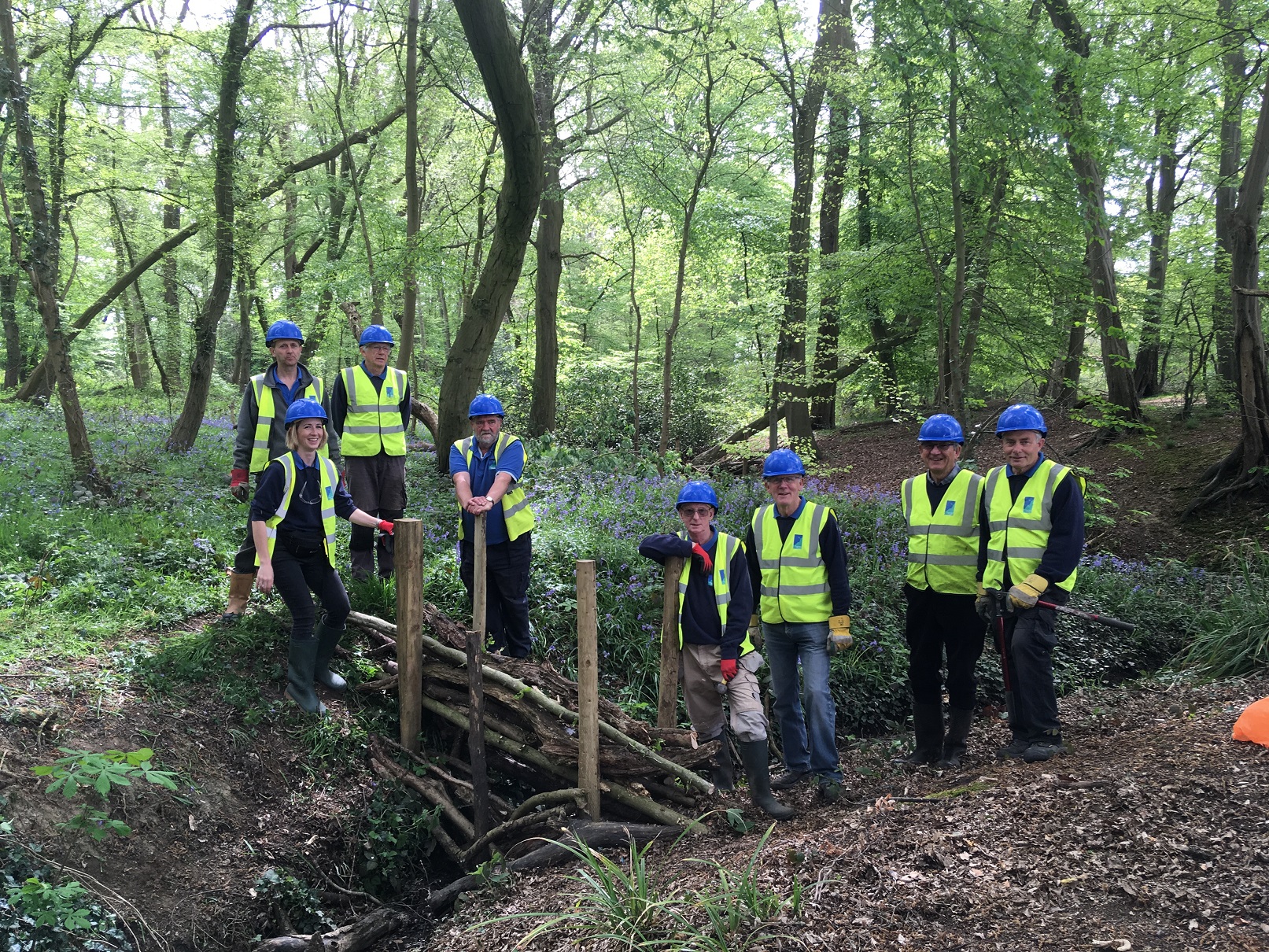
Benjamin Sanderson, Land of the Fanns Scheme Manager, said: “It’s been great to see the heavy horses back at Bedfords Park Local Nature Reserve contributing to this pilot project funded by the Environment Agency. Volunteers have also been instrumental in helping to build the dams and also supporting the monitoring work that is vital to see how effective the scheme is.”
The London Borough of Havering and Thames21 are both strategic partners in the Land of the Fanns Landscape Partnership Scheme. Thames Chase Trust is the lead partner in the project. There are six further partners: Essex County Council, Forestry England, Thames Estuary Partnership, Brentwood Borough Council, London Borough of Barking & Dagenham and Thurrock Council.
More information about the Slow Flow Catcher – NFM Citizen Science app and how to get involved here.
